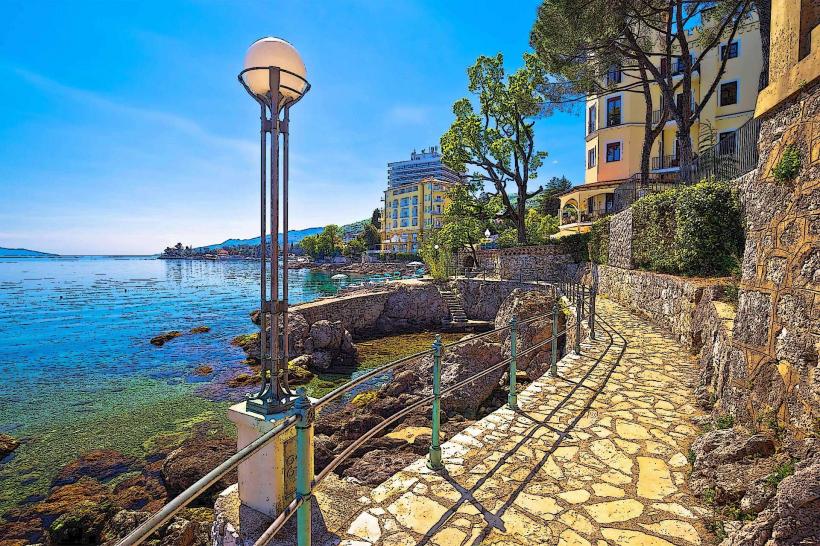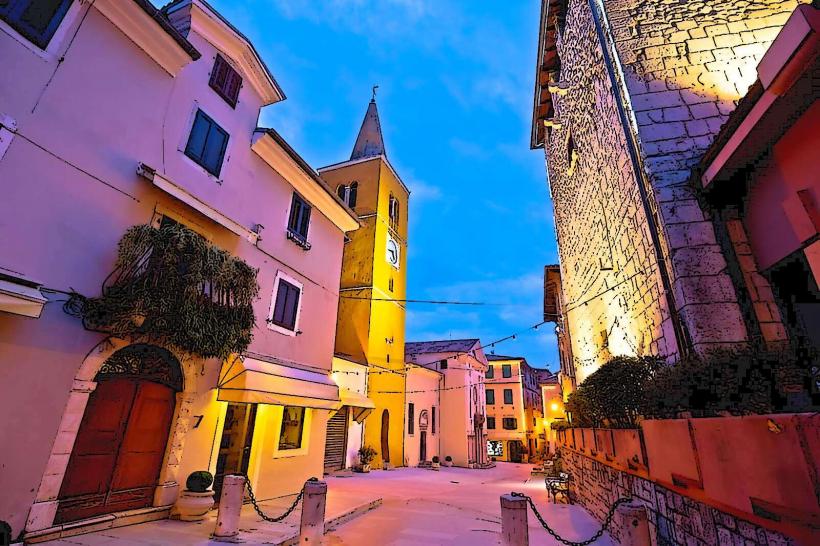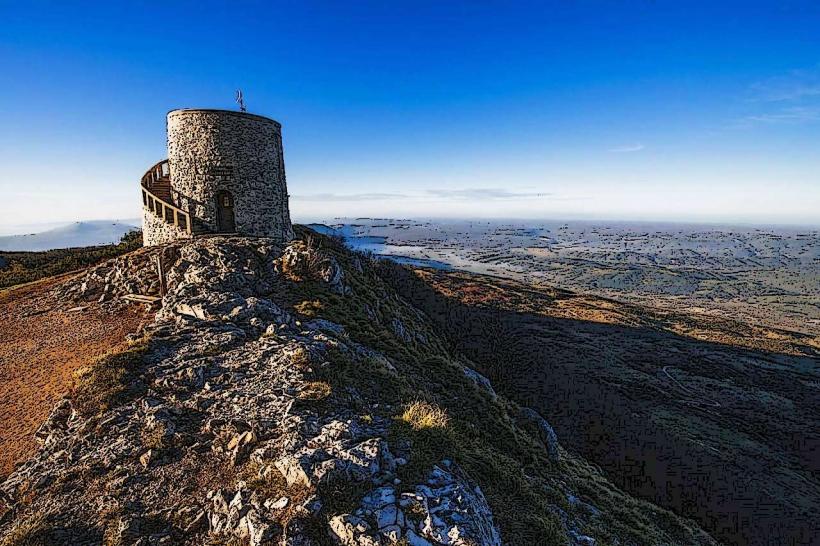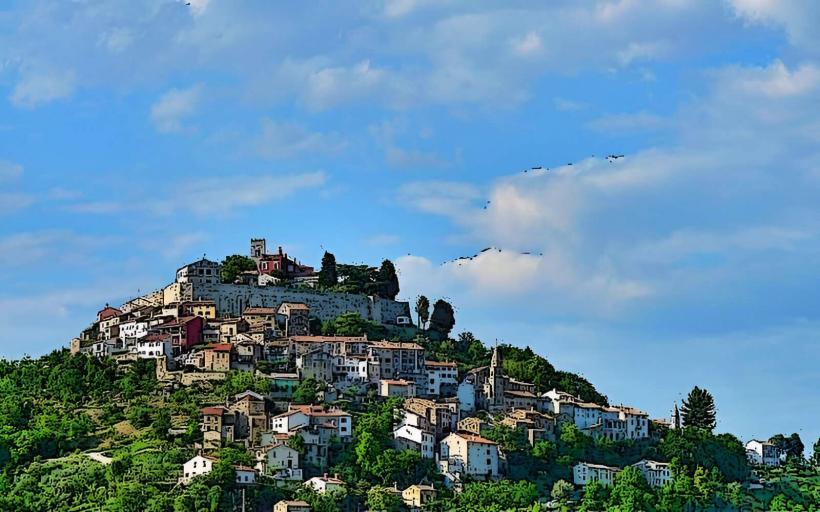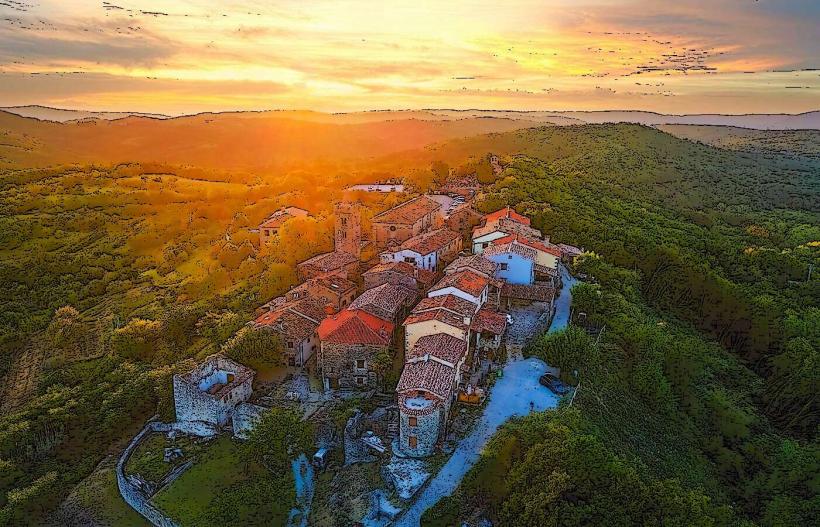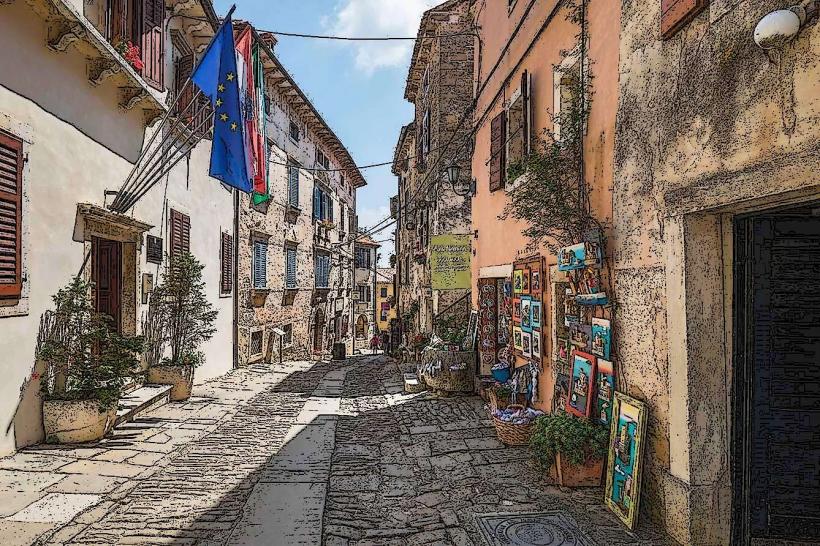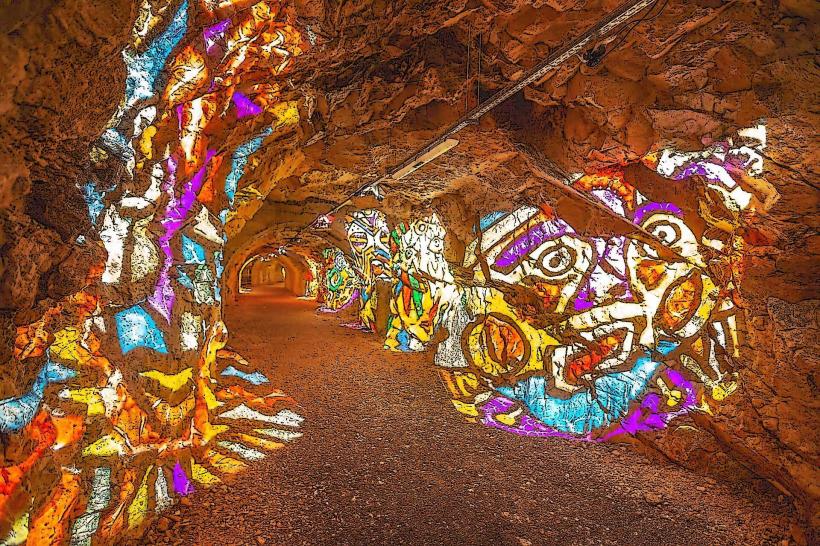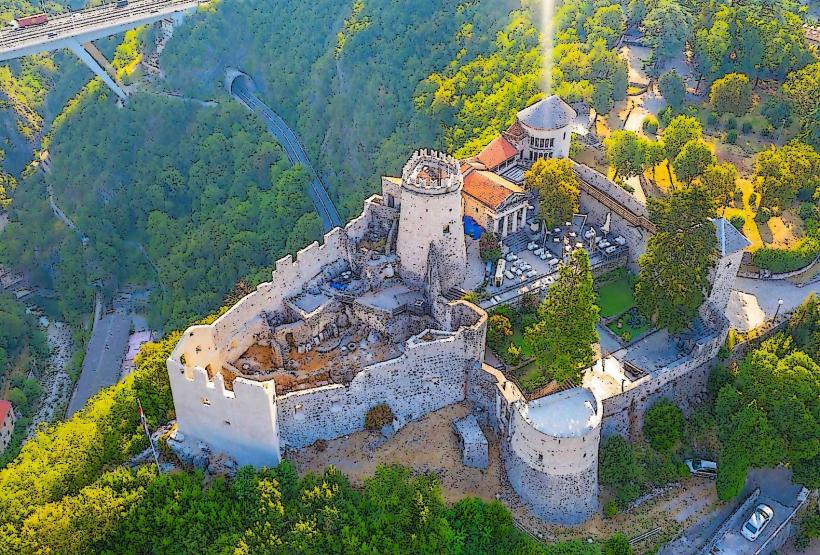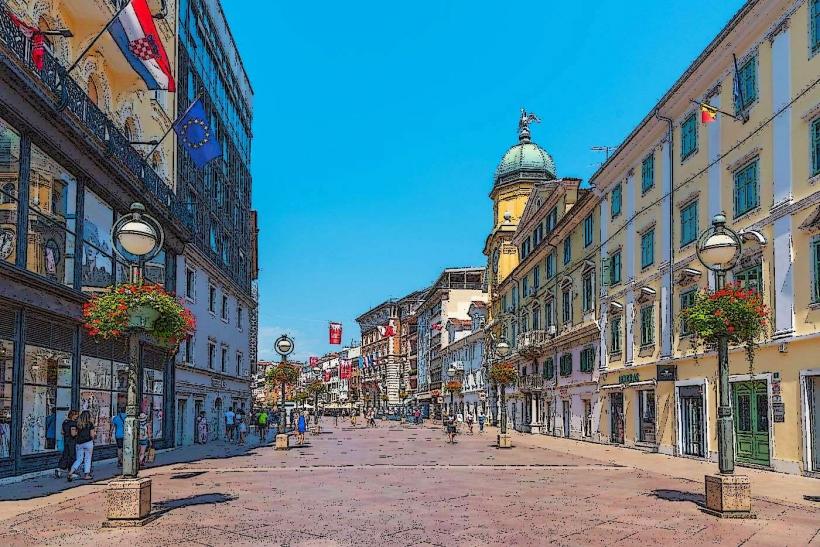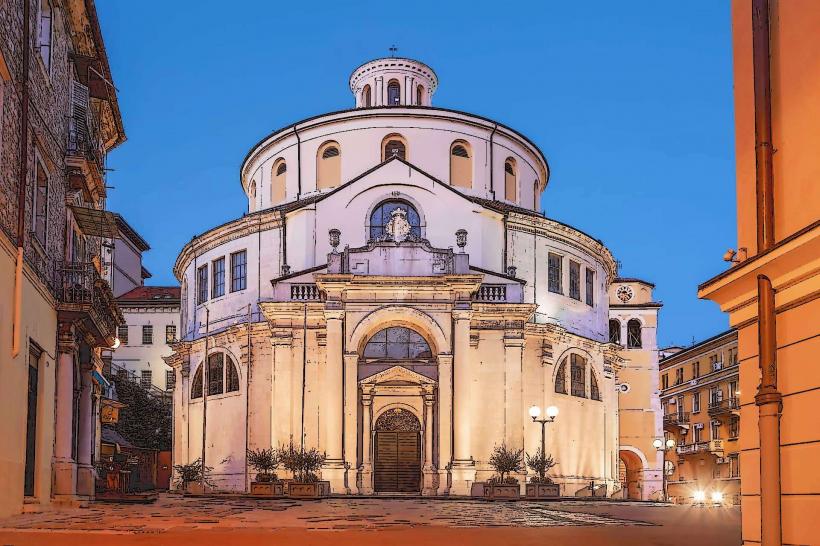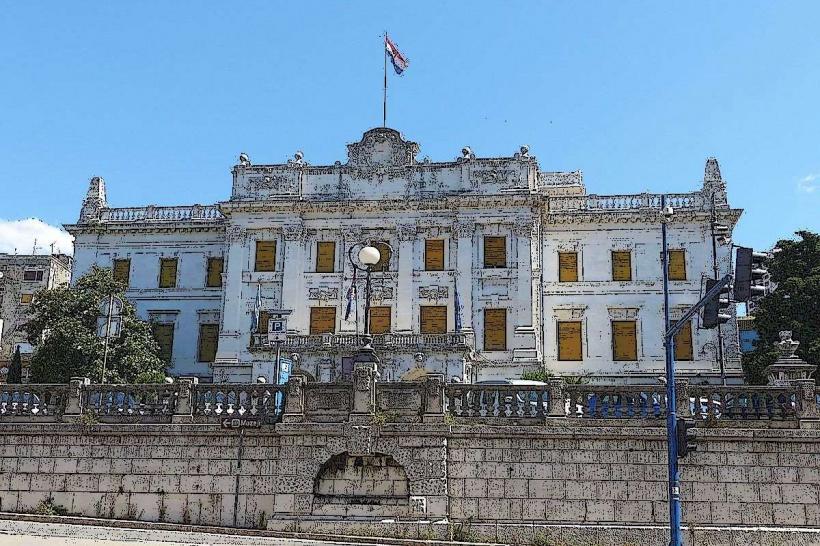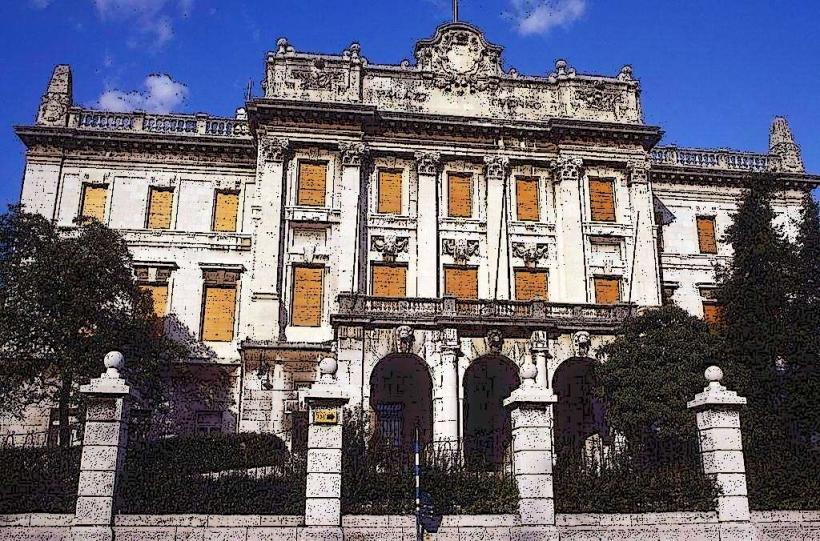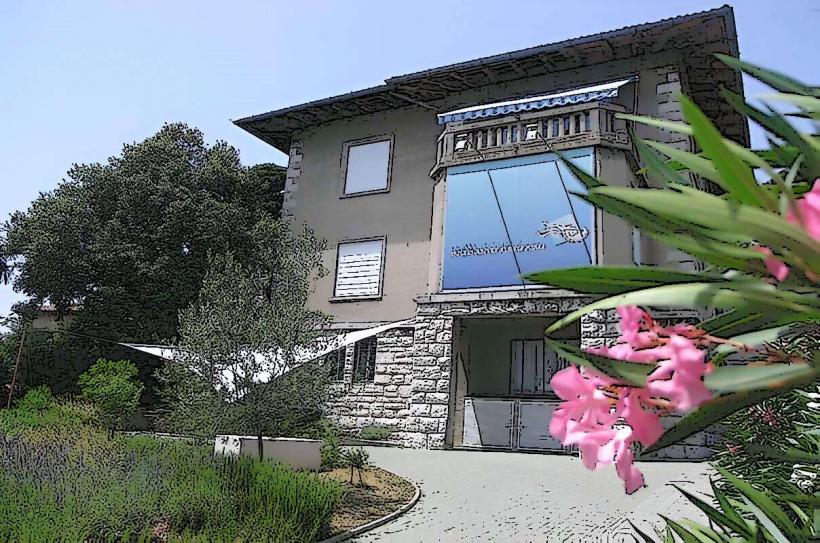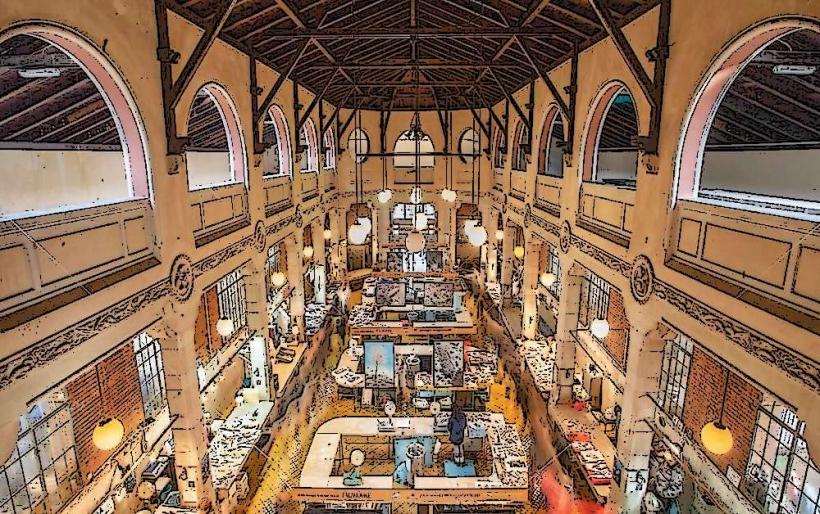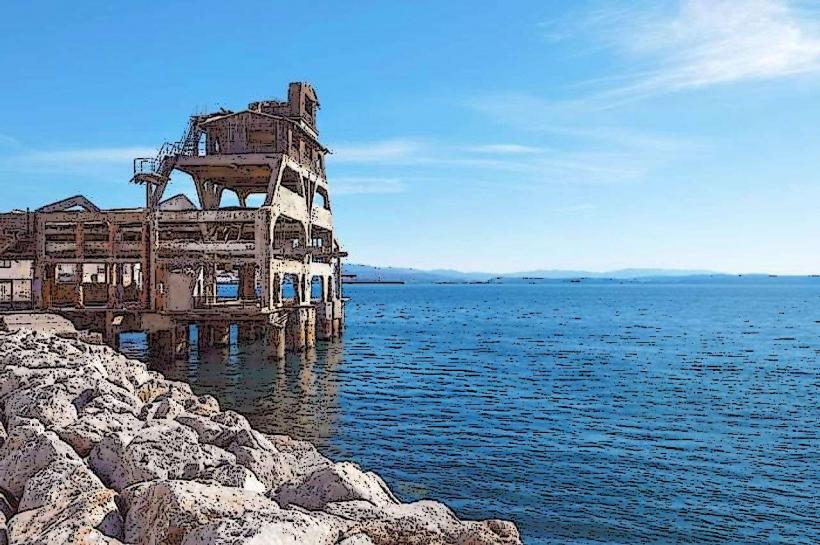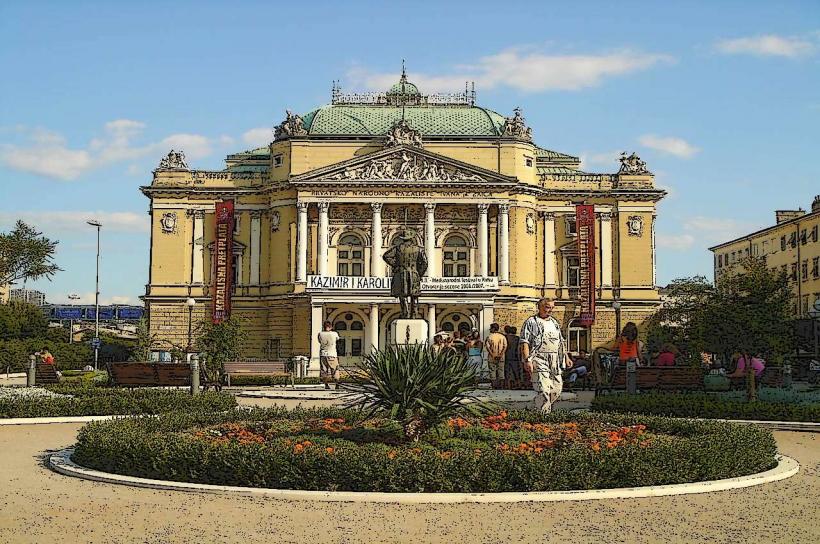Information
Landmark: Pazin CaveCity: Rijeka
Country: Croatia
Continent: Europe
Pazin Cave (also known as Pazinska Jama) is a remarkable natural landmark located near the town of Pazin, in the heart of Istria, Croatia. This stunning cave system is famous not only for its geological features but also for its historical and cultural significance. The cave is situated at the point where the Pazinčica River plunges into the depths of the earth, creating a dramatic and scenic landscape that attracts visitors from all over the world.
Overview of Pazin Cave
- Location: Pazin Cave is located just a few kilometers from the town of Pazin, in the central part of Istria. The cave is part of the larger Pazinčica River system, and it sits at the bottom of a deep karstic gorge formed by the river’s continuous erosion over thousands of years.
- Size and Depth: The cave is a karst cave, meaning it was formed by the natural dissolution of limestone over time. The entrance to the cave is about 50 meters (164 feet) wide and is surrounded by steep cliffs, creating a dramatic and awe-inspiring scene. The cave’s total length is about 100 meters (328 feet), and the depth reaches about 130 meters (426 feet), with the river flowing below.
- Historical Significance: Pazin Cave has been known since ancient times, and its location was a subject of interest even in Roman antiquity. Its unique features and the way it interacts with the surrounding landscape have made it a popular subject in Croatian and Istrian cultural heritage.
Key Features and Attractions
1. The Pazinčica River and the Cave Entrance
The Pazin Cave is located at the point where the Pazinčica River dramatically disappears into the earth. The river’s flow into the cave creates a fascinating natural spectacle, especially during periods of heavy rain when the river swells and intensifies. The entrance to the cave is marked by towering limestone cliffs, offering a striking visual of the cave’s entrance, with the river below meandering through the valley.
The gorge around the cave is lush with vegetation, providing an additional layer of natural beauty. The surroundings are perfect for hiking and exploring, offering views of the river, the cave entrance, and the dramatic cliffs.
2. The Pazin Abyss
The area around the cave is known as the Pazin Abyss (Pazinski Ponor). This large, deep chasm is one of the most significant karst features in Croatia. The river disappears into the abyss, and the water is believed to continue flowing underground, though its ultimate destination remains a mystery.
The Pazin Abyss has been a subject of fascination for geologists, adventurers, and visitors. The view from the surrounding cliffs is one of the most dramatic in Istria, with the lush greenery of the karst landscape surrounding the abyss, creating a sense of mystery and natural wonder.
3. The Cave’s Geological Formation
The cave itself is a prime example of karstic erosion. Over millions of years, the acidic water from the Pazinčica River has dissolved the limestone, creating the cave’s unique structure. Visitors can observe stunning stalactites and stalagmites, which have formed in various sections of the cave. The formation of these features continues today, with new deposits forming over time.
The cave is also home to paleontological remains, including traces of ancient life that lived in the region during the Pleistocene era. These remains add an extra layer of historical intrigue to the cave’s natural beauty.
4. Adventure Tourism
For adventure enthusiasts, Pazin Cave offers opportunities for caving and spelunking. Adventurers can explore the cave’s chambers and narrow passageways, though the cave’s remote and rugged location requires experienced guides and appropriate equipment. The cave system can be challenging to navigate, so it is recommended that visitors join guided tours led by local experts.
In addition to caving, the surrounding karst landscape offers fantastic hiking and trekking opportunities. The cliffs and gorge around the cave are popular with rock climbers and nature enthusiasts looking to explore the dramatic terrain.
5. The Pazin Castle Overlook
One of the best vantage points for viewing Pazin Cave and the Pazin Abyss is from the nearby Pazin Castle (also known as Kaštel Pazin), which stands on a hill overlooking the gorge. The castle dates back to the 10th century and has been expanded and renovated over the years. Today, it houses a museum showcasing the region’s history, geology, and cultural heritage.
From the castle, visitors can take in a breathtaking view of the cave’s entrance and the surrounding gorge, making it an essential stop when visiting the area.
6. Jules Verne and the Pazin Cave
Pazin Cave also has literary significance. It is famously associated with Jules Verne, the renowned French author of adventure novels like "Journey to the Center of the Earth". Verne is believed to have been inspired by the cave when writing about underground passages and mysterious landscapes in his works. The Pazin Cave is often cited as a possible inspiration for the central passage in Verne’s novel, and the surrounding region has been recognized for its influence on Verne’s imagination.
7. The Pazin Cave's Flora and Fauna
The surrounding area of Pazin Cave and the Pazin Abyss is rich in biodiversity. The steep cliffs and gorge are home to a variety of plants, including mediterranean flora, and the river valley is covered in dense forests. The cave itself is also home to a variety of cave-dwelling species, including insects, bats, and other unique organisms adapted to the dark and humid environment.
The area around the cave offers opportunities for birdwatching, and visitors may spot species such as griffon vultures and eagles that nest in the cliffs of the gorge.
Practical Information for Visitors
Accessibility: The cave itself is not easily accessible to all visitors due to its rugged terrain, steep cliffs, and the need for guided tours for those wishing to explore its deeper chambers. However, visitors can easily access the area around the cave for sightseeing and photography. The Pazin Castle, located nearby, offers an excellent vantage point for views of the cave and the surrounding gorge.
Best Time to Visit: The best time to visit Pazin Cave is during the spring and fall, when the weather is mild and the area is less crowded. However, summer also offers pleasant weather and the chance to participate in outdoor activities. Winter can be cold and rainy, so be prepared if visiting during this season.
Guided Tours: Guided tours are available for those who wish to explore the cave more thoroughly or learn about its geological and historical significance. It is recommended to book tours in advance, especially during peak tourist seasons.
Parking: Visitors can find parking near Pazin Castle or other designated areas in the town of Pazin. From there, it’s a short walk to the cave and its viewing points.
Nearby Amenities: Pazin is a charming town with a rich history, and visitors can enjoy local restaurants offering Istrian cuisine, as well as a variety of accommodation options, from guesthouses to hotels.
Conclusion
Pazin Cave is one of Istria’s most dramatic and awe-inspiring natural features, offering a combination of geological intrigue, historical significance, and adventure tourism. Its stunning location within the Pazinčica River Gorge provides visitors with breathtaking views and the chance to explore a fascinating karstic landscape. Whether you’re interested in caving, history, literature, or simply enjoying the natural beauty of Istria, Pazin Cave is a must-visit destination for nature lovers and adventure seekers.

